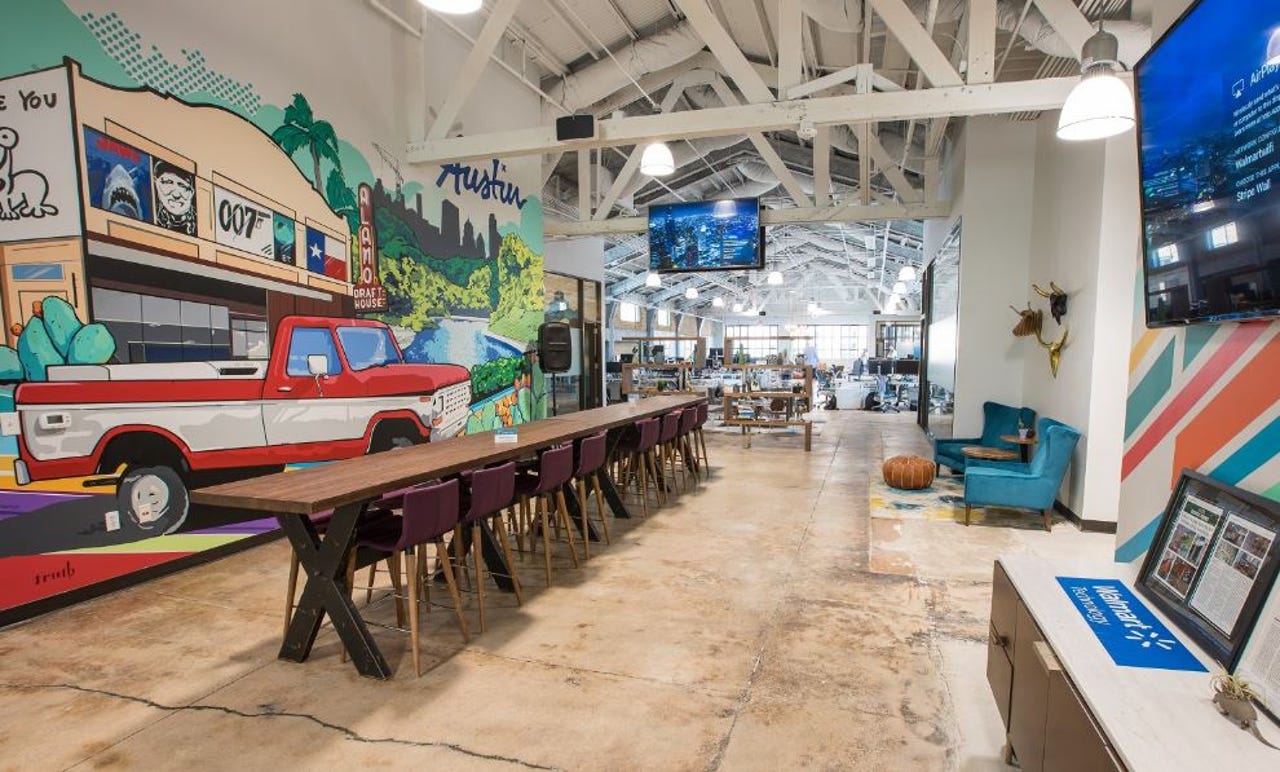Walmart is bringing 'thousands' of internal business apps to Microsoft's Azure


Windows 10
Microsoft and Walmart announced a "strategic partnership" back in July. At that time, Walmart committed to using Azure, Microsoft 365 and Microsoft AI and Internet of Things (IoT) tools and technologies to modernize its retail operations.
On Nov. 5, Microsoft and Walmart officials said they were adding "an extension" to their original five-year deal. That extension involves Walmart expanding its existing Innovation Hub in Austin, Texas. The so-called Walmart "cloud factory," slated to open in 2019, will be staffed by 30 technologists, including engineers from both Walmart and Microsoft, according to a Microsoft blog post about the deal.
Also: Windows 10: A cheat sheet TechRepublic
As part of this expansion, Walmart is planning to move thousands of its internal apps to Azure, plus build some new cloud-native applications. Walmart officials say they are going to use Microsoft's Cognitive Services, machine learning and chat bot technologies.
Microsoft's Walmart win is worth noting for a few reasons.
First, it's an example of the type of customer that Microsoft is targeting by positioning itself as an alternative to Amazon -- which is both a cloud vendor and a competitor to other brick-and-mortar retailers.
The Walmart deal also gives me an opportunity to talk about Microsoft's redefinition of the word "partner."
Until a couple of years ago, when Microsoft officials talked about partners, they meant either reseller/integrator partners or they meant OEM/ISV partners. More recently, Microsoft uses the partner/partnership terms a lot more loosely. Some Microsoft customers are now "partners," too.
Microsoft's justification in calling customers partners seems to be that many times -- as in Walmart's case -- Microsoft engineers and managers end up working side-by-side with the company's customers' engineering and management teams. This actually isn't new; Microsoft has been embedding its own engineers and support people inside key customers' shops for years, maybe decades.
But Microsoft officials maintain that things are different this time.
When Microsoft reorganized its salesforce a year ago and cut multiple thousands of jobs in the process, it also subsequently hired "more than 3,000 developers into the salesforce," according to Microsoft Executive Vice President of its Worldwide Commercial Business Judson Althoff. As a result, "we can actually code with our customers and help them really digitize everything they do within their business," Altoff said during the Citi Global Technology Conference in September.
As part of that reorg, Microsoft also built a "customer success organization," Altoff reminded attendees, which is basically a "non-billable consulting" organization, he explained.
"These are people that live with our customers beyond the deal to make sure that our cloud services actually get infused into business processes, that you don't have the cloud equivalent of shelfware in the software world. It's also been huge for us because the adoption and the actual utilization of the services has increased dramatically over the last year," he said.
Also: Microsoft's obsession with Windows is ending CNET
(This is all part of Microsoft's big change in compensating sales people for software/services sold vs. software/services that are actually consumed.)
Microsoft is going so far as to categorize some big customers officially as "digital partners," Altoff noted. At the Citi conference he cited Boeing as an example, saying "we've actually taken their digital aviation assets, put them on our Azure platform, and we co-sell with them to other airlines around the world."
So for those trying to keep tabs at home, not all Microsoft "partners" are created equal. Some (many?) are actually customers, not traditional channel partners.
A brief history of Microsoft's Surface: Missteps and successes
Previous and related coverage:
How to install, reinstall, upgrade and activate Windows 10
After Windows 10 upgrade, do these seven things immediately
How to upgrade from Windows 10 Home to Pro for free
Related stories:
- Top Windows 10 questions: How to install, secure, upgrade, get it for free
- Here's how Microsoft plans to milk more profits out of its cash cow
- Windows 10 tip: Disable annoying app notifications
- Microsoft is bringing the Robot Operating System to Windows 10
- Here's how we're hitting back at fileless malware, says Microsoft
- New Windows 10 preview updates sign-in screen
- PC sales might actually grow next year, thanks to Windows 10